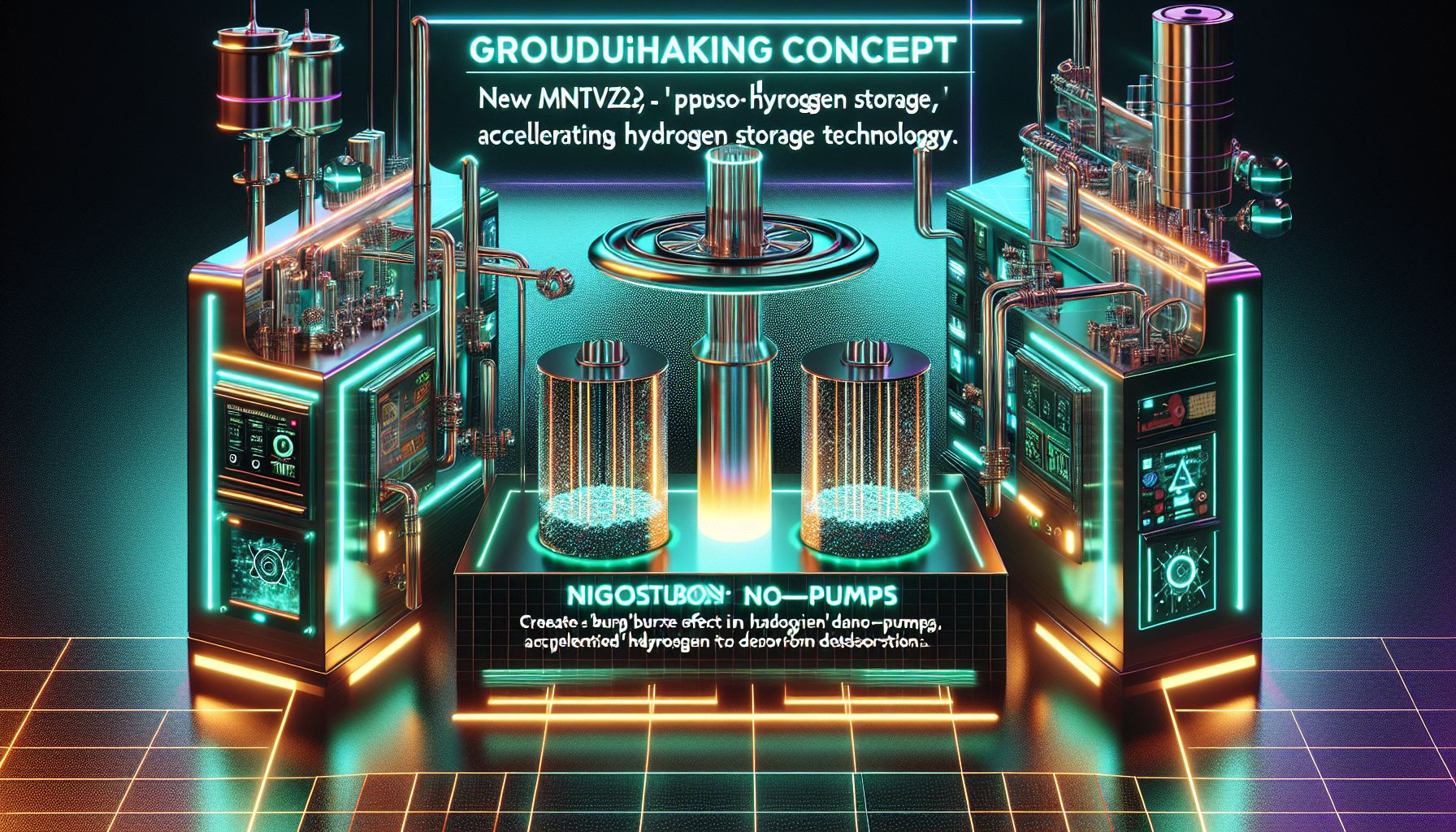Nano-Pumps: A Game Changer for Hydrogen Storage

London, Monday, 3 November 2025.
New MnTiVZr nano-pumps create a ‘burst effect’ in MgH2, speeding up hydrogen desorption. This could revolutionise hydrogen storage, making it a key player in sustainable energy.
Revolutionising Hydrogen Storage with Nano-Pumps
Hey there! Let’s talk about something pretty cool that’s happening in the world of hydrogen storage. Scientists have been working on this nifty little thing called MnTiVZr nano-pumps, which are making a big splash in how we store hydrogen. These tiny pumps create what’s called a ‘burst effect’ in magnesium hydride (MgH2), speeding up the hydrogen desorption process significantly. It’s like giving MgH2 a turbo boost to release hydrogen faster and more efficiently [1].
The Science Behind the Magic
Now, I know what you’re thinking—how does this all work? It’s all about changing the rate-controlling step of MgH2 from surface penetration to hydrogen diffusion. With MnTiVZr-4 nanosheets, this transformation allows dehydrogenation at a much lower temperature of 196.9°C, with activation energy dropping to 92.6 ± 4.8 kJ/mol [1]. This scientific wizardry means MgH2 can absorb hydrogen rapidly, even at room temperature, and charge 5.2% of its weight in hydrogen in just 10 minutes at 150°C [1]. Impressive, right?
Why This Matters
So, why should you care? Well, this breakthrough addresses a massive hurdle that’s been holding back magnesium hydride from being commercially viable—its slow desorption rates [1]. Magnesium hydride is valued not only for its high hydrogen storage capacity but also for being abundant and relatively cheap [1]. By making desorption faster and more efficient, these nano-pumps are paving the way for hydrogen to become a key player in sustainable energy solutions [1].
The Bigger Picture
This isn’t just about making hydrogen storage better; it’s about the broader shift toward sustainable energy. As we push for cleaner, greener solutions, innovations like these nano-pumps could be game-changers. They promise to make hydrogen a more feasible alternative to fossil fuels, aligning with global efforts to reduce carbon emissions and combat climate change [2][3].
A Future of Possibilities
What’s next for these tiny titans of technology? Well, researchers are optimistic about their potential in various applications, from powering vehicles to storing renewable energy. It’s like opening a door to a future where hydrogen plays a central role in our energy landscape [1]. So, keep an eye on this space—exciting times are ahead!